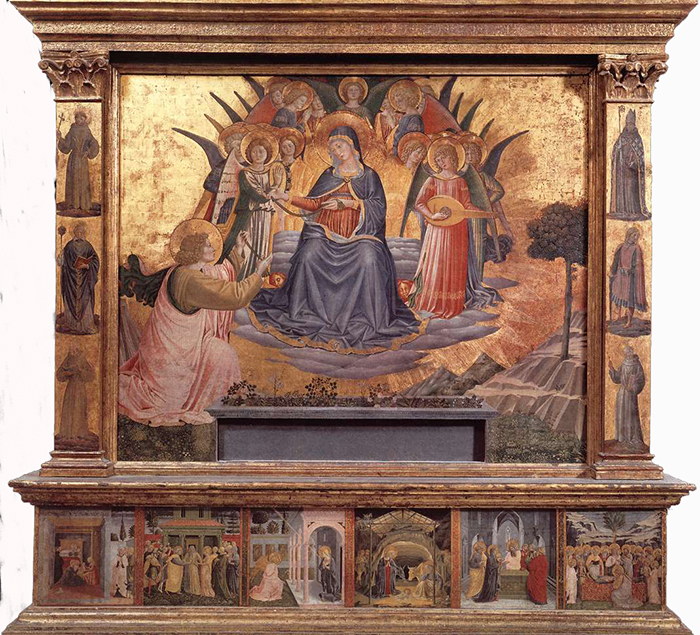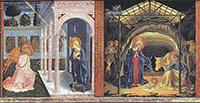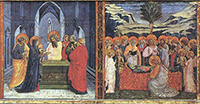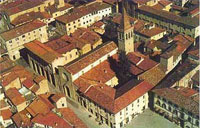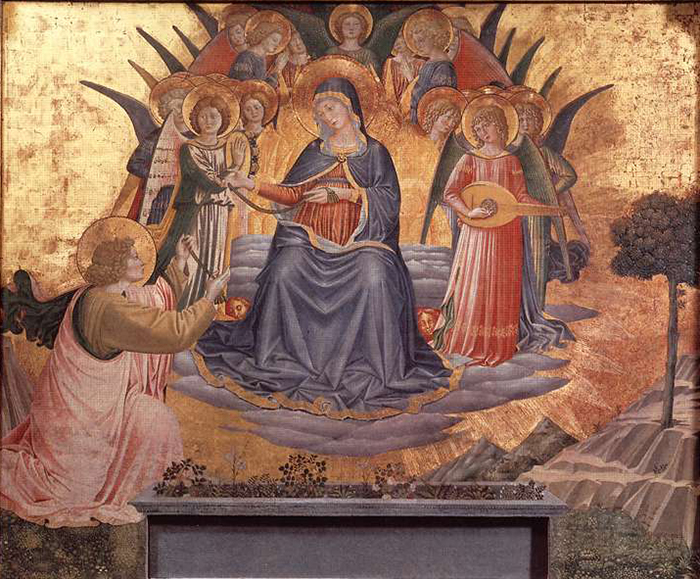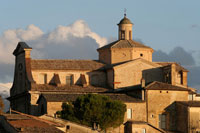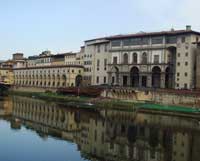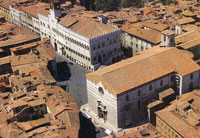| Benozzo Gozzoli (c. 1421 - 1497) was an Italian Renaissance painter from Florence. He is best known for a series of murals in the Palazzo Medici-Riccardi depicting festive, vibrant processions with wonderful attention to detail and a pronounced International Gothic influence.
According to Giorgio Vasari, in the early part of his career he was a pupil and assistant of Fra Angelico: some of the works in the convent of San Marco of Florence were executed by Gozzoli from Angelico's design. In 1444-1447 he collaborated with Lorenzo Ghiberti and his studio on the Paradise Doors of the Battistero di San Giovanni.
In 1459 Benozzo was summoned to Florence by the Medici to carry out the prestigious commission - the most important of his career - of decorating the walls of the Capella di Palazzo Medici-Ricardi. The subject chosen was the Procession of the Magi in which he portrayed various members of the Medici family, with its young princes handsomely, even flamboyantly dressed and all set against a wonderful landscape, creating the fairy tale of the Renaissance (1459-60).
Benozzo painted one of his highest quality paintings for the high altar of the church of San Fortunato in Montefalco: the Madonna della Cintola, which is now in the Pinacoteca Vaticana. The town of Montefalco presented the painting to Pope Pius IX (1846-1878).
Angels are surrounding Mary in a semi-circle and, as it were, form an aureole in which the arrangement of the angels' wings matches the points of a crown. The gold background, which in the Middle Ages was used to elevate the depicted scene and give it an unreal, supernatural element, had from the 15th century onwards been replaced by depictions of landscapes and architectural settings. By this time, the gold background was already much rarer in Italian painting and symbolizes the transcendental, divine space, increasing the distance between the saints and the secular world. The subject of Mary lowering her girdle is not mentioned in the Gospels, but in the New Testament Apocrypha, Thomas, one of the 12 apostles, doubted Mary's Assumption. The Virgin appeared to him and, as proof, gave the doubting apostle her girdle. The theme was particularly popular in Italian, and particularly Tuscan, art during the 15th century, for since 1365 the Madonna's girdle had been venerated as a relic in the cathedral of Prato. The lowering of the girdle was frequently depicted - another peculiarity of Italian art from the 15th century - in combination with the Assumption of the Virgin.
The pillars at the side of the altar panel contain depictions of saints, Sts Francis, Fortunatus and Anthony of Padua being on the left, Sts Louis of Toulouse, Severus of Montefalco, whose remains are kept in San Fortunato, and Bernadine of Siena are standing on the right side.
The predella contains six scenes relating episodes from the life of Mary. It begins on the left side with the Birth of Mary, continues with her Marriage, the Annunciation, the Birth of Christ and the Presentation in the Temple, and ends with the Death of Mary.
|
